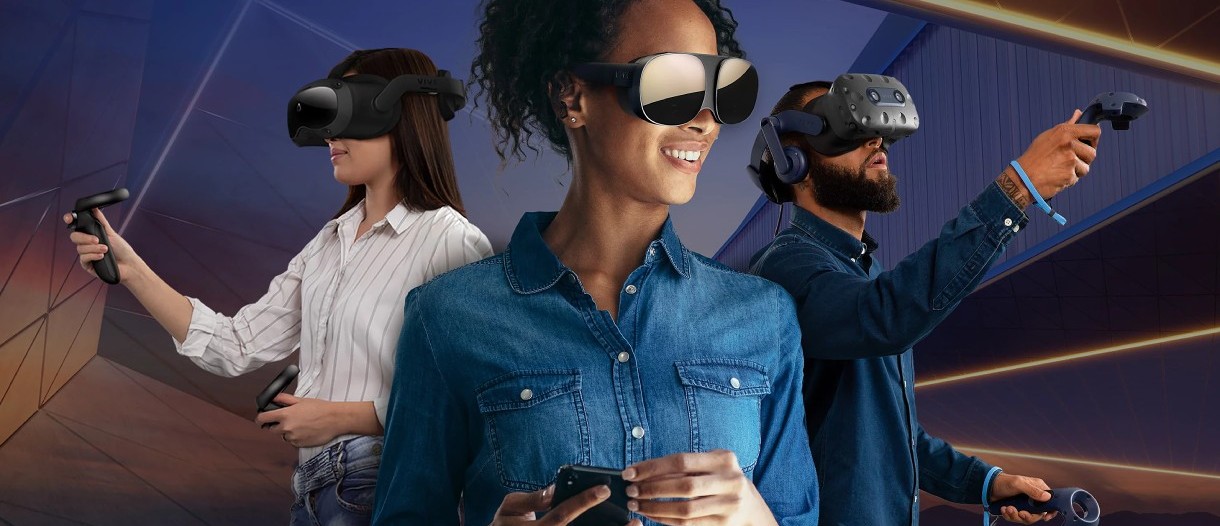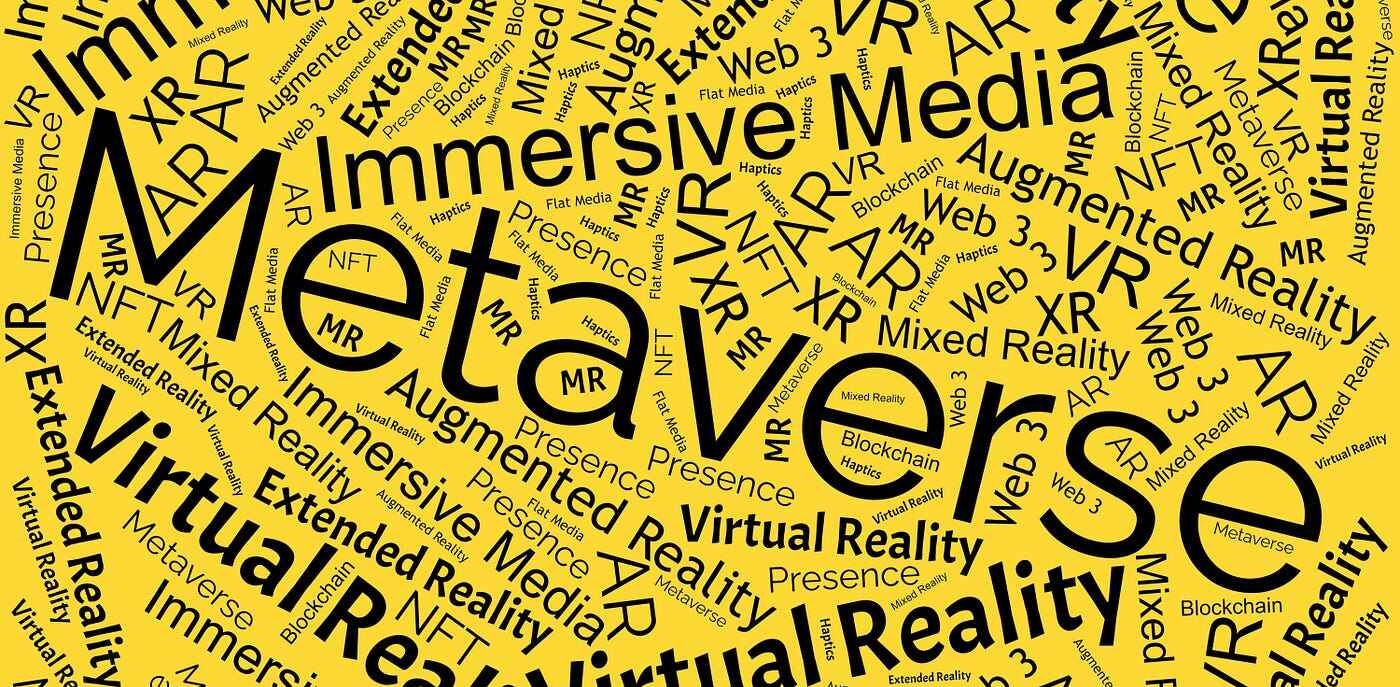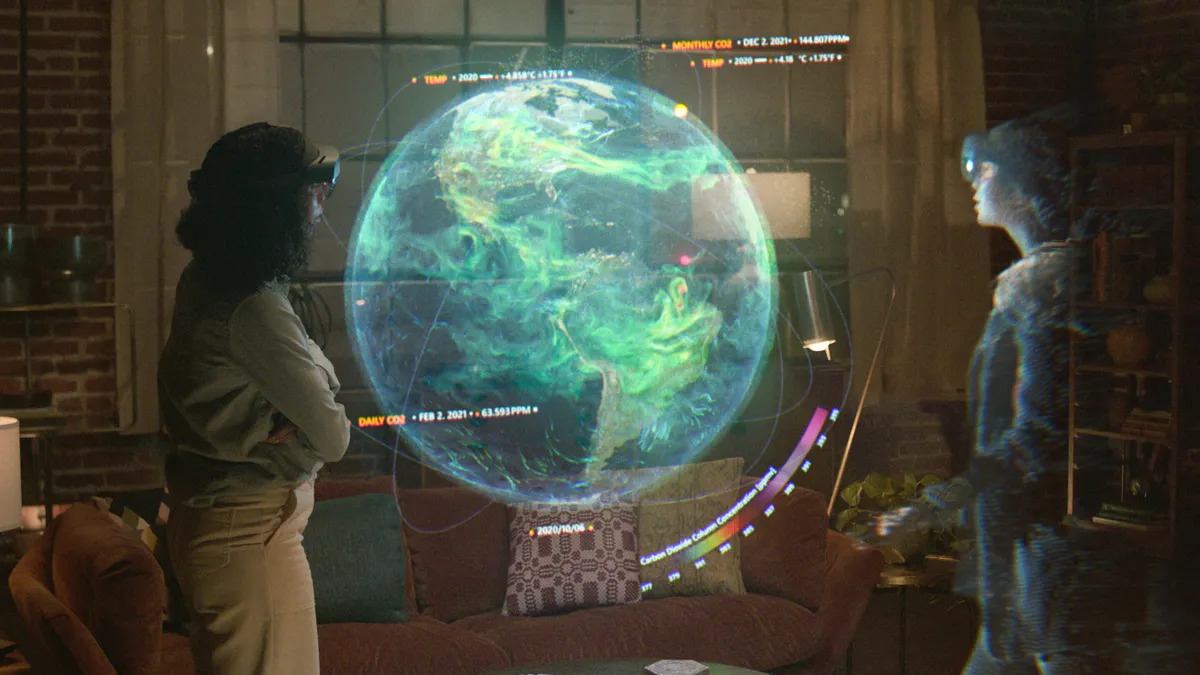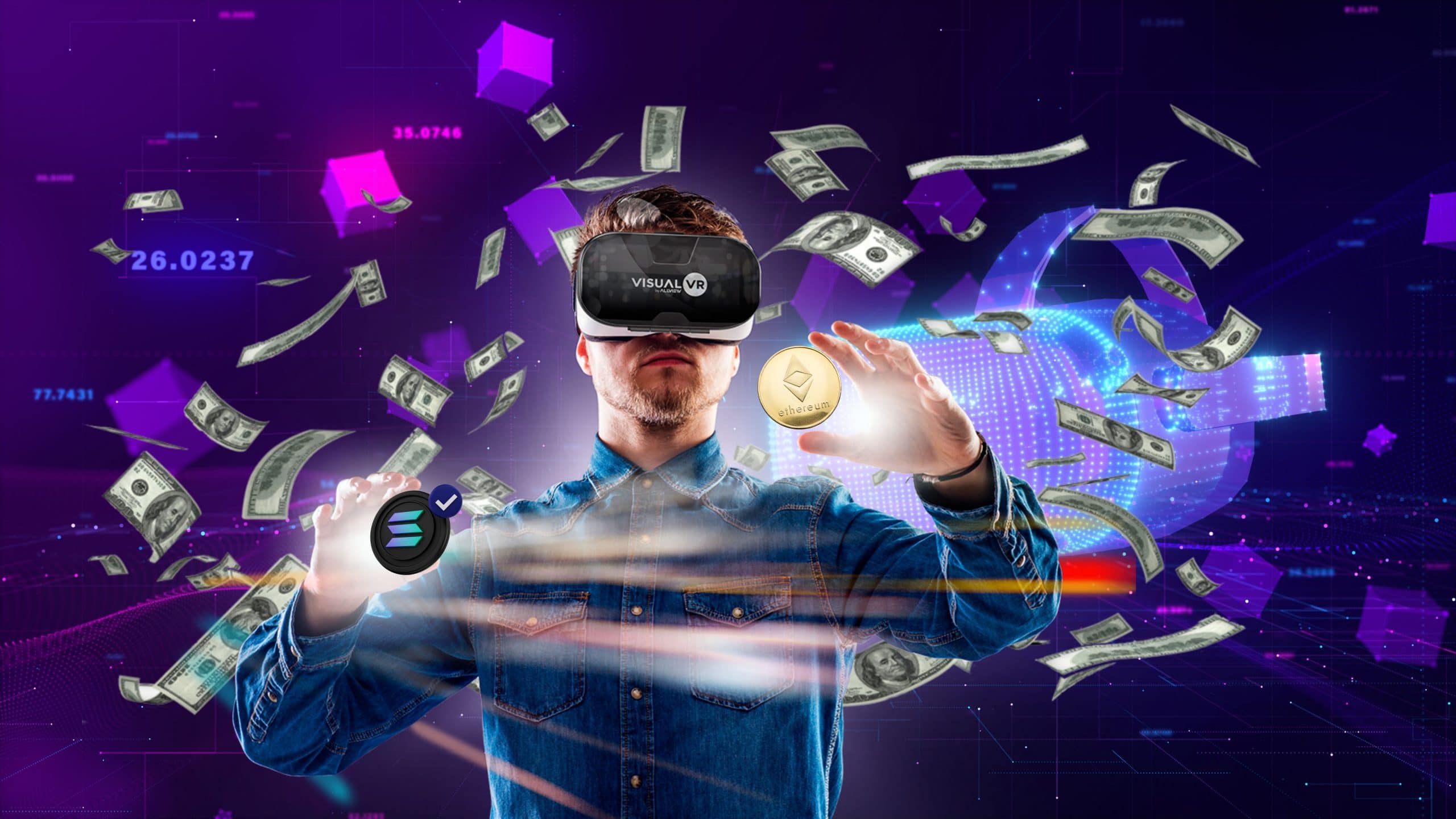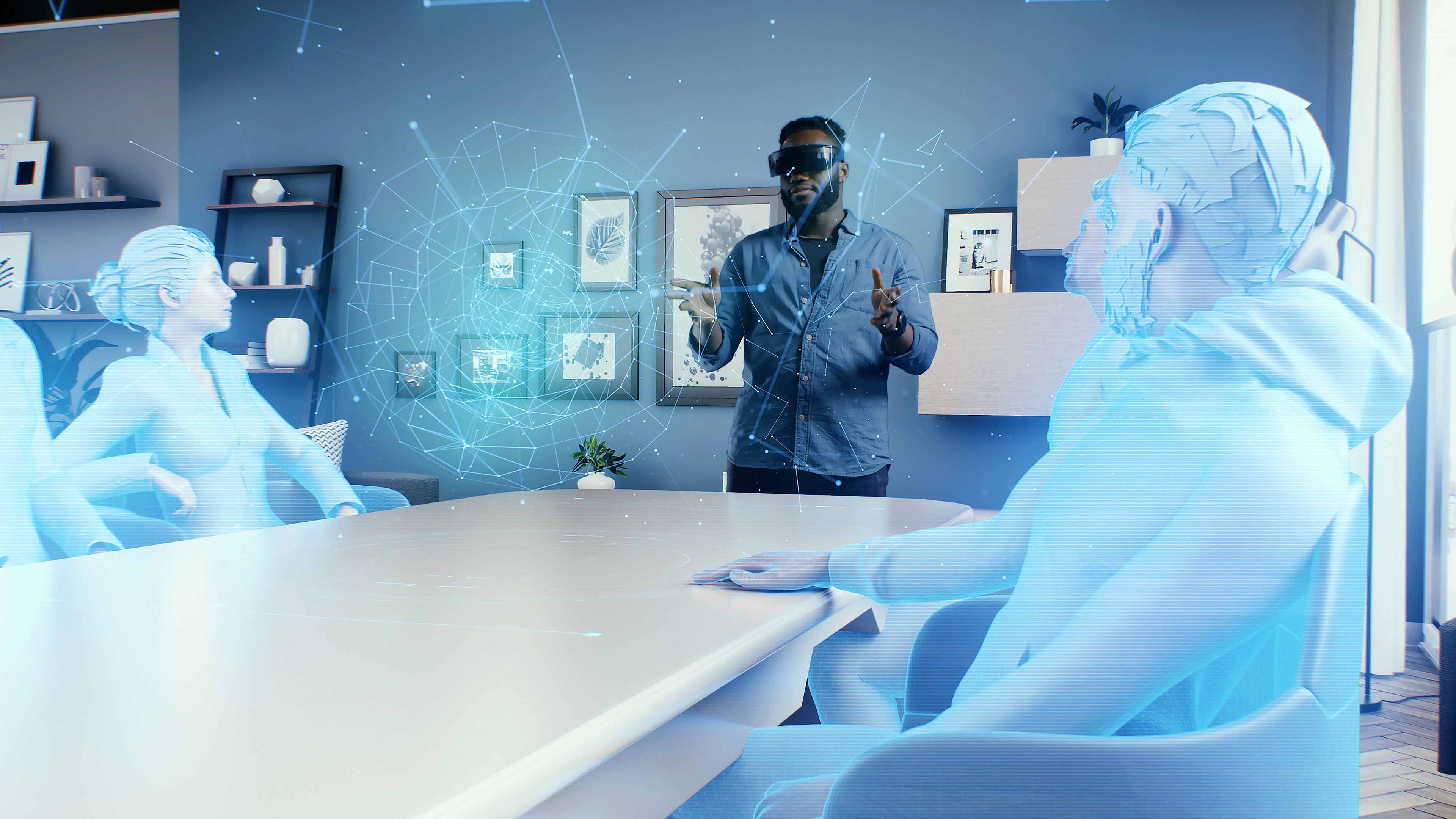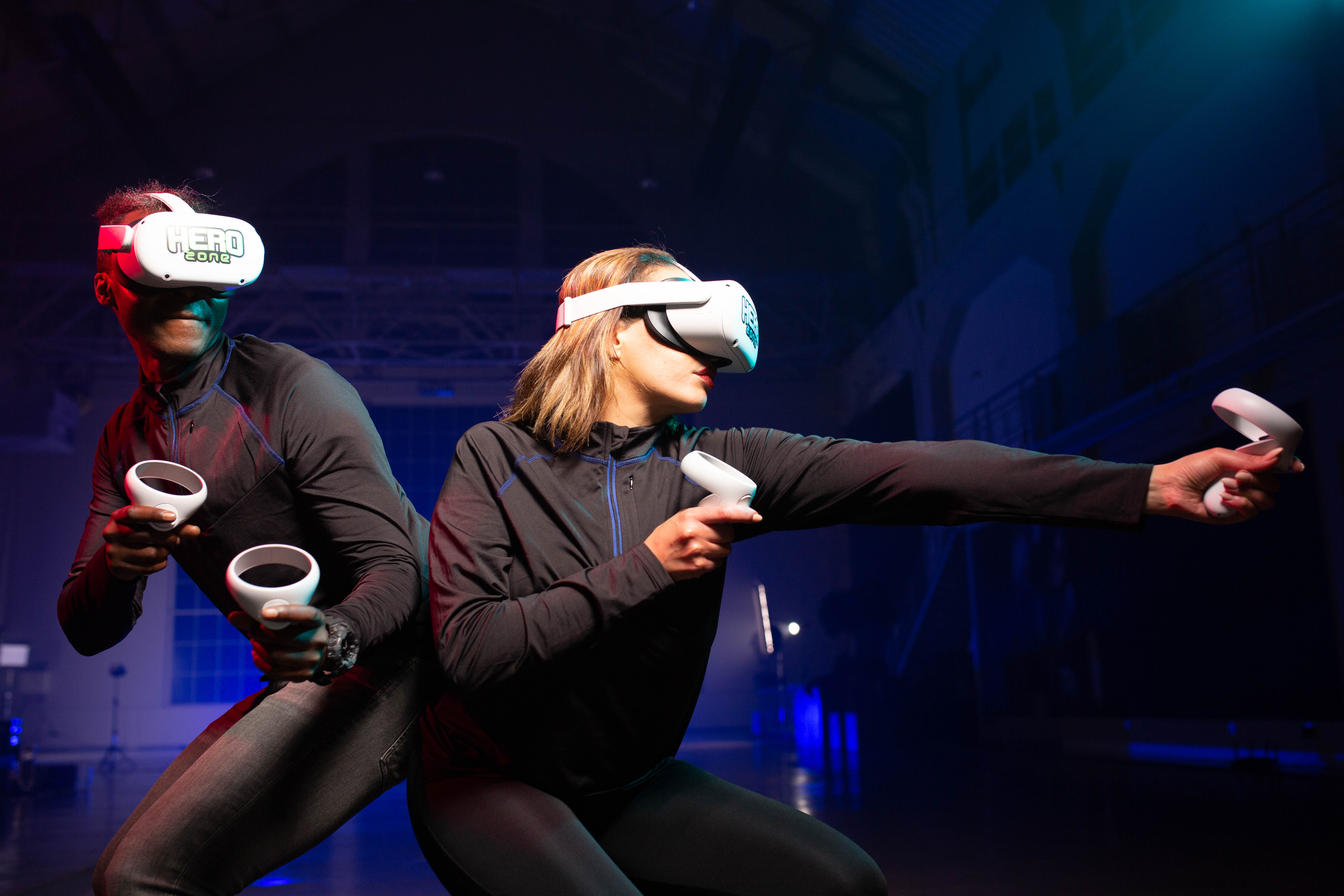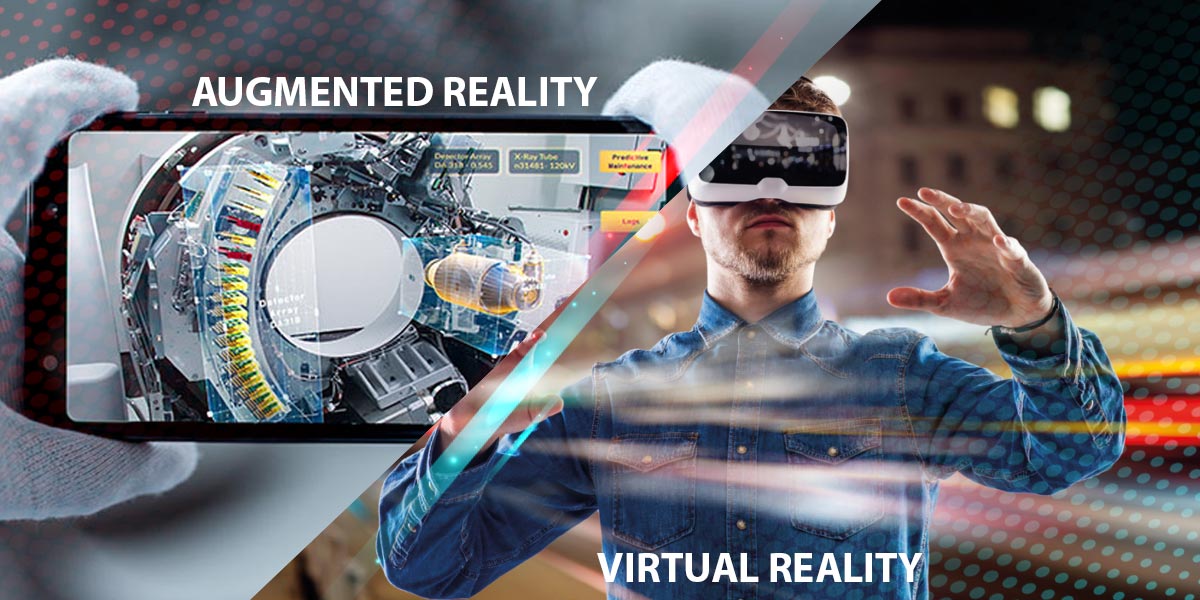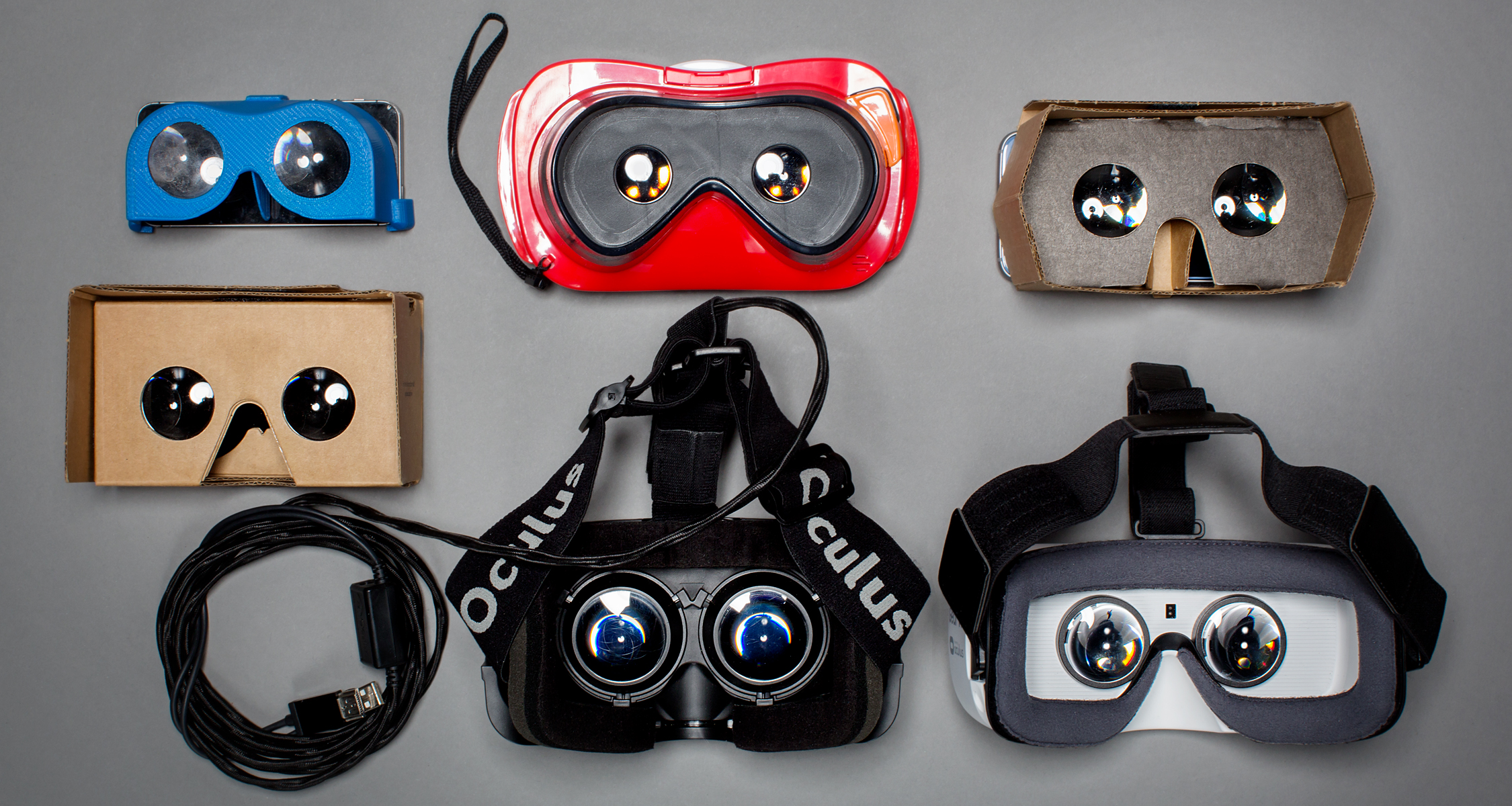Introduction
Virtual reality (VR) is an innovative technology that has transformed the way we experience and interact with the digital world. By creating a simulated environment, VR provides users with a truly immersive and interactive experience. Through the use of specialized devices such as headsets and controllers, users can visually and audibly perceive a computer-generated environment as if they were physically present within it.
The advantages of virtual reality are vast and extend across various domains, including education, entertainment, healthcare, and more. This revolutionary technology has the potential to revolutionize the way we learn, train, work, and even socialize.
VR offers a level of immersion that traditional mediums such as video or audio cannot replicate. By wearing a VR headset, users can feel as if they are transported to a different world altogether, engaging multiple senses and creating a sense of presence within the virtual environment. This level of immersion has many practical applications and benefits that can positively impact our lives.
In this article, we will explore the advantages of virtual reality and the potential it holds for transforming various industries. From enhancing learning and training experiences to overcoming physical limitations, VR is opening up new possibilities that were previously unimaginable.
Immersive Experience
One of the key advantages of virtual reality is its ability to create a truly immersive experience. Unlike traditional mediums, VR allows users to be fully engaged and interact with the digital environment in a way that feels natural and lifelike.
By combining high-definition visuals, realistic audio, and precise tracking, virtual reality can transport users to different places and situations. Whether it’s exploring a virtual museum, diving into the depths of the ocean, or even flying through outer space, VR offers a level of immersion that captivates the senses and suspends disbelief.
The immersive experience provided by virtual reality has tremendous potential in fields such as architecture and interior design. Designers can create virtual walkthroughs of buildings and spaces, allowing clients to visualize and experience the design before it is even constructed. This not only enhances the design process but also facilitates better decision-making and reduces the risk of costly mistakes.
Additionally, virtual reality is revolutionizing the way we consume media and entertainment. With VR headsets, users can step into the shoes of their favorite characters, virtually attend live events and concerts, or even participate in exciting virtual gaming experiences. The level of immersion and interactivity offered by VR takes entertainment to a whole new level, creating unforgettable and deeply engaging experiences.
Moreover, virtual reality has the potential to revolutionize the way we experience travel. Through VR, individuals can explore distant locations, historical landmarks, and cultural attractions without leaving their homes. This not only offers a convenient alternative for those who are unable to travel physically but also opens up a world of possibilities for education and exploration.
Overall, the immersive experience provided by virtual reality is a game-changer. By creating realistic and interactive environments, VR has the power to transport us beyond our physical boundaries and unlock a whole new realm of possibilities.
Enhanced Learning and Training
Virtual reality has the potential to revolutionize the way we learn and train by providing immersive and interactive experiences that are unparalleled by traditional methods. Whether it’s in classrooms, corporate settings, or professional training programs, VR offers unique advantages that enhance the learning process.
In educational settings, virtual reality can transport students to historical events, scientific expeditions, or even microscopic environments that would otherwise be inaccessible in the real world. By simulating realistic scenarios and providing hands-on experiences, VR enables students to engage actively and deepen their understanding of complex subjects. This level of immersion enhances retention and comprehension, making learning more impactful and memorable.
Furthermore, virtual reality can be particularly valuable in professional training programs. For example, in healthcare, VR simulations can replicate medical procedures, allowing trainees to practice in a safe and controlled environment. This reduces the risk of errors and enhances proficiency and confidence. Similarly, in industries such as aviation and construction, VR simulations can provide realistic training experiences that mimic real-life scenarios, improving skills and decision-making abilities.
Another benefit of virtual reality in the realm of learning and training is its ability to cater to individual learning styles and preferences. Through interactive components and personalized feedback, VR allows learners to adapt the experience to their own pace and needs. This personalized approach promotes engagement and motivation, leading to better learning outcomes.
Moreover, virtual reality can connect learners from different geographical locations, enabling collaborative learning experiences. Students and professionals can come together in virtual environments, sharing knowledge and working together on projects or problem-solving activities. This fosters a sense of community and facilitates cross-cultural understanding.
Overall, virtual reality offers enhanced learning and training experiences by providing immersive, interactive, and personalized educational environments. By leveraging the power of VR, we can redefine the way we acquire knowledge and skills, opening up new opportunities for lifelong learning and professional development.
Practical Applications in Various Industries
Virtual reality has a wide range of practical applications across various industries, transforming the way we work, create, and innovate. Let’s explore some of the key sectors where virtual reality is making a significant impact.
In the field of architecture and design, virtual reality allows architects and designers to create immersive 3D models of buildings and spaces. This enables clients to virtually experience and visualize the proposed designs, making it easier to communicate ideas and make informed decisions. VR also helps architects assess the functionality and aesthetics of their designs before construction, saving time and resources.
The healthcare industry is another sector benefiting from virtual reality. Surgeons can use VR simulations to practice complex procedures and plan surgeries, reducing the risks associated with real-life operations. Additionally, VR is used in pain management, therapy, and rehabilitation, offering a safe and controlled environment for patients to overcome fears and phobias.
In manufacturing and engineering, virtual reality aids in product design and prototyping. Engineers can visualize and test product concepts in a virtual environment, allowing for iterative improvements and cost-effective development. VR also assists in training workers on complex machinery and equipment, ensuring safety and efficiency.
The automotive industry adopts virtual reality for designing cars, testing vehicle prototypes, and simulating driving experiences. Companies can evaluate the ergonomics, functionality, and aesthetics of new models before entering production, saving time and resources.
Military and defense organizations leverage virtual reality for training purposes. Soldiers can engage in realistic simulations that mimic combat scenarios, helping them develop tactical skills and decision-making abilities without the need for live field exercises.
Virtual reality is also revolutionizing the entertainment and gaming industry. With VR headsets and controllers, users can immerse themselves in virtual worlds, providing a truly captivating and interactive gaming experience. This technology has opened up new possibilities in storytelling, game mechanics, and user engagement.
These are just a few examples of the practical applications of virtual reality in various industries. As the technology continues to advance, we can expect to see even more sectors embracing VR as a powerful tool for innovation, efficiency, and improved user experiences.
Virtual Travel and Exploration
One of the most exciting applications of virtual reality is in the realm of travel and exploration. Virtual reality allows individuals to embark on virtual journeys and explore new destinations, all from the comfort of their own homes.
With virtual reality, you can visit iconic landmarks, bustling cities, serene natural landscapes, and cultural heritage sites. Through immersive 360-degree videos and virtual tours, you can virtually step foot in these locations and experience them as if you were physically there. This opens up a world of possibilities for individuals who are unable to travel due to physical limitations, cost constraints, or time restrictions.
Virtual travel experiences provide a sense of presence and connection to different parts of the world. Whether you’ve always dreamed of standing on the Great Wall of China, diving into the Great Barrier Reef, or exploring Machu Picchu, virtual reality brings these destinations to life with stunning realism.
Beyond tourism, virtual reality is also utilized in scientific research and exploration. Scientists and researchers can use VR to explore uncharted territories, such as the depths of the ocean or the vastness of space. By creating virtual simulations, they can gather data, conduct experiments, and analyze complex environments in ways that were previously impossible.
Virtual reality also offers the opportunity for virtual field trips for educational purposes. Students can visit historical locations, ancient civilizations, or even interact with wildlife in their natural habitats, enhancing their learning experience and fostering a deeper understanding of the world around them.
Furthermore, virtual reality can serve as a valuable tool for promoting sustainable tourism. By allowing individuals to virtually experience destinations, the need for physical travel is reduced, minimizing the environmental impact and carbon emissions associated with travel.
While virtual travel cannot fully replace the experiences of physical travel, it provides a valuable alternative and supplement. It allows us to broaden our horizons, spark our curiosity, and foster a sense of appreciation for the diverse wonders our world has to offer.
Overcoming Physical Limitations
Virtual reality has the remarkable ability to break physical barriers and provide opportunities for individuals with mobility limitations or disabilities. By creating virtual environments, VR allows people to engage in activities and experiences that may be challenging or impossible in the real world.
For individuals with mobility impairments, virtual reality can offer a sense of freedom and independence. Through immersive virtual experiences, they can explore new environments, participate in virtual sports and activities, and even interact with others in virtual social settings. This not only enhances their quality of life but also promotes inclusivity and equal access to experiences that were previously inaccessible.
In the healthcare field, virtual reality is used for rehabilitation purposes. Patients recovering from injuries or surgeries can engage in virtual simulations that mimic real-life activities, aiding in their recovery process and restoring their functional abilities. VR-based therapy for patients with neurological conditions, such as stroke or traumatic brain injury, has shown promising results in improving motor skills and cognitive functions.
Virtual reality also has the potential to address phobias and anxieties. Through exposure therapy in virtual environments, individuals can gradually and safely confront their fears, such as fear of heights, flying, or public speaking. This opens up new possibilities for overcoming psychological barriers and improving mental well-being.
Furthermore, virtual reality can be a tool for training and skill development for individuals with disabilities. For example, individuals with visual impairments can engage in auditory and tactile VR experiences to learn new skills or navigate virtual environments, enhancing their independence and autonomy.
Overall, virtual reality offers a means of overcoming physical limitations and enabling individuals to engage in activities and experiences that may have previously been out of reach. By leveraging the power of virtual environments, VR opens doors for inclusivity, rehabilitation, and personal development, empowering individuals to transcend their physical constraints and lead fulfilling lives.
Entertainment and Gaming
Virtual reality has revolutionized the entertainment and gaming industry, offering immersive and interactive experiences that take entertainment to the next level. With VR headsets and controllers, users can step into virtual worlds and fully engage with the digital environment, providing a new level of escapism and enjoyment.
Virtual reality gaming offers a truly immersive experience that transports players into the game world. Whether it’s exploring fantastical landscapes, engaging in intense action sequences, or solving puzzles, VR gaming enhances the sense of presence, making players feel like active participants rather than passive observers. The ability to physically interact with the virtual environment using hand controllers adds a level of realism and engagement that traditional gaming cannot match.
Moreover, virtual reality is not limited to solo experiences. Multiplayer VR games allow players to interact with friends and individuals around the world, collaborating or competing in virtual environments. The social aspect of VR gaming adds a new dimension of enjoyment and connection, making gaming a shared experience even when physically apart.
Entertainment industries beyond gaming are also capitalizing on virtual reality. VR films and 360-degree videos immerse viewers in the narrative, allowing them to experience stories from different perspectives. This presents a new form of storytelling that blurs the line between traditional cinema and interactive experiences.
Live events and performances have also embraced virtual reality. Through VR technology, individuals can attend concerts, festivals, and sporting events virtually, experiencing the thrill of being present without the limitations of physical space or capacity. This opens up exciting possibilities for global audiences to access live events without the need for travel.
Additionally, virtual reality has transformed theme parks and amusement centers. VR rides and attractions allow visitors to take part in thrilling experiences that go beyond the confines of physical roller coasters or simulated environments. These immersive experiences combine physical sensations with visual and auditory elements, providing an adrenaline-pumping adventure.
Virtual reality is pushing the boundaries of entertainment, offering experiences that are not only visually captivating but also physically engaging and emotionally immersive. As technology continues to advance, we can expect virtual reality to become an integral part of the entertainment landscape, changing how we consume and interact with media.
Social Interaction and Communication
Virtual reality has the power to revolutionize social interaction and communication by providing immersive and realistic virtual environments where individuals can interact and connect with others from around the world.
VR social platforms create a sense of presence where users can interact with avatars that represent themselves, enabling realistic social interactions. Through virtual reality, individuals can communicate, collaborate, and engage in activities together as if they were physically present, regardless of their physical location.
Virtual reality offers a new dimension of socialization by enhancing non-verbal cues and body language. Avatars can mimic real-life gestures and expressions, enabling more authentic and meaningful interactions. This deeper level of immersion can foster empathy and emotional connections, making virtual interactions feel more personable and human.
Virtual reality also breaks down geographical barriers, allowing people from different parts of the world to come together in shared virtual spaces. Whether it’s attending virtual conferences, hosting business meetings, or participating in virtual social gatherings, VR provides a platform for meaningful connections without the need for physical travel.
Furthermore, virtual reality can facilitate cross-cultural understanding and promote inclusivity. Through virtual environments, individuals can experience different cultures, languages, and perspectives, fostering empathy and breaking down barriers. This has significant implications for fostering global collaboration, cultural exchange, and intercultural learning.
In addition to socializing and collaborating, virtual reality offers new possibilities for creative expression and entertainment. Users can attend virtual concerts, art galleries, or theater performances, sharing the experience with friends or meeting new people who share similar interests. Virtual reality also provides opportunities for shared gameplay experiences, allowing friends to play together in virtual worlds and engage in cooperative or competitive activities.
Beyond recreational purposes, virtual reality is also leveraged for professional networking and teamwork. VR collaborative platforms enable remote teams to work together, share ideas, and collaborate on projects, fostering productivity and enhancing communication efficiency.
While virtual interactions may not fully replace face-to-face interactions, virtual reality expands the possibilities for meaningful connections and experiences. It breaks physical boundaries, promotes inclusivity, and enhances social interactions in ways that were previously unimaginable, bringing people closer together in a virtual world.
Psychological and Therapeutic Benefits
Virtual reality has demonstrated significant psychological and therapeutic benefits, offering a new frontier for mental health treatment and overall well-being. This emerging technology creates immersive and controlled environments that can be tailored to address various psychological needs and therapeutic goals.
One of the key advantages of virtual reality in therapy is its ability to create safe and controlled environments for exposure therapy. Virtual reality simulations can help individuals confront and overcome fears, phobias, and anxieties in a gradual and controlled manner. By exposing patients to virtual stimuli, therapists can guide them through desensitization exercises, helping to reduce anxiety and improve coping strategies.
Beyond exposure therapy, virtual reality is effective in managing stress and promoting relaxation. By immersing individuals in calming and serene virtual environments, VR can induce a sense of tranquility and provide a much-needed escape from the pressures of everyday life. This can be particularly beneficial for individuals dealing with anxiety disorders, PTSD, or high-stress situations.
Virtual reality also has applications in cognitive rehabilitation. Individuals with cognitive impairments due to stroke, traumatic brain injury, or neurodegenerative disorders can engage in virtual cognitive exercises that help improve memory, attention, and problem-solving skills. The interactive nature of virtual reality provides a stimulating and engaging environment for cognitive training.
Furthermore, virtual reality has shown promise in addressing pain management. By redirecting attention and creating immersive experiences, VR can distract individuals from physical discomfort, reducing the perception of pain. This has been particularly effective in acute and chronic pain conditions, providing a drug-free alternative to pain management.
Virtual reality has also been used as a therapeutic tool for individuals with autism spectrum disorder. Through virtual social situations and scenarios, individuals can practice social skills, improve communication, and enhance perspective-taking abilities. VR provides a safe and controlled environment for individuals to learn and develop important social interactions.
Additionally, virtual reality holds potential for emotional well-being and self-expression. Virtual reality art therapy allows individuals to create and explore artwork within immersive virtual environments, promoting self-reflection, emotional expression, and personal growth.
Overall, virtual reality offers a powerful tool for psychological and therapeutic interventions. Its immersive nature, controlled environments, and ability to simulate experiences have shown promising results in addressing a wide range of mental health conditions and improving overall well-being.
Future Possibilities and Potential Drawbacks
Virtual reality technology continues to advance at a rapid pace, and with it comes exciting future possibilities. From improved hardware and more realistic graphics to enhanced sensory experiences, the future of virtual reality holds immense potential in various domains.
In the field of healthcare, virtual reality has the potential to transform treatments and interventions even further. As technology evolves, we can expect more sophisticated simulations and tailored experiences that address specific psychological and physical conditions. Virtual reality could potentially be integrated with other technologies, such as biofeedback sensors or artificial intelligence, to create personalized and adaptive therapeutic interventions.
The educational landscape is also set to benefit from future developments in virtual reality. With the continued refinement of VR educational content and platforms, students can expect even more immersive and engaging learning experiences. The integration of virtual reality in remote learning settings could bridge the gap between traditional and virtual classrooms, enhancing accessibility and interactivity.
Moreover, industries such as architecture, engineering, and manufacturing can explore the full potential of virtual reality in design, prototyping, and simulation. As hardware becomes more advanced, virtual reality can provide increasingly realistic and accurate representations of physical spaces, enabling better decision-making and more efficient workflows.
Despite the numerous advantages, virtual reality also presents potential drawbacks and challenges. One of the primary concerns is the potential for addiction or over-reliance on virtual reality experiences. As the technology becomes more immersive and engaging, individuals may become disconnected from the real world and struggle with distinguishing between virtual and physical environments.
Another potential drawback is the high cost of VR equipment and content. While virtual reality technology has become more accessible over the years, it still requires a significant investment in hardware, software, and compatible devices. This cost may limit widespread adoption, particularly in certain sectors or for individuals with limited resources.
Privacy and ethical concerns are also areas of consideration with the use of virtual reality. As virtual reality platforms gather data about users’ behaviors and interactions, there is a need to ensure appropriate privacy protection and data security measures. Additionally, ethical considerations may arise when using virtual reality for therapeutic purposes, including informed consent, the potential for unintended consequences, and the maintenance of professional boundaries.
Lastly, the potential for social isolation and detachment from the physical world is a concern. Spending excessive amounts of time in virtual reality environments may lead to decreased face-to-face social interactions and physical activity, which could have negative impacts on mental and physical well-being.
While virtual reality offers tremendous potential, it is crucial to address these challenges and ensure responsible and ethical use of the technology as it continues to evolve and expand into various aspects of our lives.







